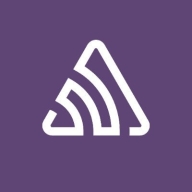

Sentry and Prometheus-AI Platform are competing products in the market of application performance monitoring and AI-driven analytics. Sentry holds an advantage in pricing and customer support, whereas Prometheus-AI Platform leads with advanced AI-driven capabilities, making it suitable for complex analytics despite the higher cost.
Features: Sentry offers critical error monitoring with real-time alerts, supports a range of frameworks for troubleshooting, and simplifies performance metrics tracking. Prometheus-AI Platform provides sophisticated data analytics, machine learning functionalities for predictive insights, and a more comprehensive view beyond basic monitoring through its AI capabilities.
Room for Improvement: Sentry could improve by extending its AI capabilities, enhancing predictive analytics, and offering deeper integration for complex insights. Prometheus-AI Platform might refine its deployment process for easier integration, offer cost-effective solutions for smaller teams, and improve the intuitive nature of its user interface.
Ease of Deployment and Customer Service: Sentry is known for a streamlined deployment process, integrating quickly with various environments, supported by strong customer service. Prometheus-AI Platform, while involving a more extensive deployment due to its complex functionalities, offers robust assistance to manage these intricacies effectively.
Pricing and ROI: Sentry offers a modest setup cost, favoring quick ROI with efficient monitoring, appealing for smaller teams. Prometheus-AI Platform demands a higher initial investment, justified by its powerful analytics capabilities that provide strategic insights, suitable for larger enterprises looking for in-depth analysis.
Using open-source Prometheus saves me money compared to AWS native services.
Prometheus does not offer traditional technical support.
We have not contacted their technical support because everything is easy to set up under Sentry.
Prometheus is scalable, with a rating of ten out of ten.
We have not encountered any scalability issues with Sentry.
Deploying it on multiple instances or using Kubernetes for automatic management has enhanced its stability.
Integrations or single sign-on capability with Microsoft would be beneficial for securing all assets.
Prometheus is cost-effective for me as it is free.
Compared to New Relic, it provides the necessary features at a cheaper cost, especially since we moved infrastructure monitoring to Azure.
It allows me to save money by avoiding costs associated with AWS native services like CloudWatch or Amazon Prometheus.
Real-time error tracking helps our Quality Assurance team easily identify the root causes of problems or bugs and promptly inform the developers about specific issues.
Sentry provides real-time error tracking which is invaluable for identifying and resolving issues quickly.
At this time, I focus on finding and fixing bugs.


| Company Size | Count |
|---|---|
| Small Business | 14 |
| Midsize Enterprise | 8 |
| Large Enterprise | 12 |
| Company Size | Count |
|---|---|
| Small Business | 7 |
| Midsize Enterprise | 3 |
| Large Enterprise | 3 |
Prometheus-AI Platform offers flexible solutions for collecting, visualizing, and comparing metrics, appreciated for its scalability, rich integrations, and open-source adaptability.
Prometheus-AI Platform provides a reliable framework for monitoring and analyzing metrics across diverse environments. With extensive API support, it supports data collection, querying, and visualization, integrating seamlessly with tools like Grafana. High availability, scalability, and lightweight configuration make it suitable for traditional and microservice environments, while community support enhances its utility. Though its query language and interface require improvements for better ease of use, and with calls for stronger integration options, the platform remains a leading choice for comprehensive metric analysis.
What are Prometheus-AI Platform's main features?Companies leverage Prometheus-AI Platform across various industries, utilizing it to monitor and analyze metrics from applications and infrastructure. It is extensively used in financial services and IT sectors for collecting, scraping logs, and monitoring Kubernetes deployments. Deployed both on-premise and in cloud environments like Azure and Amazon, it supports system and application metrics analysis, ensuring a comprehensive view for developers.
Sentry is a robust error management system known for real-time error tracking and integration with tools like Slack, GitLab, and Jira, benefiting those seeking comprehensive application performance insights.
Sentry offers a seamless platform to monitor errors in both front-end and back-end applications, providing real-time alerts and comprehensive event log context. With its integration capabilities, teams effectively track application metrics and access performance data without direct production access, ensuring enhanced reliability. Sentry's features such as event grouping and code trace logs linked to Git repositories highlight its utility in maintaining application efficiency. Enhanced security and regular updates make it a preferred choice over competitors. Despite some requests for improvements in automation and UI enhancements, Sentry remains invaluable for error management and application performance monitoring.
What are the key features of Sentry?In industries like technology, Sentry is crucial for monitoring errors in web applications, offering real-time alerts and performance tracking. It is frequently used in ETL processes to detect failures without direct developer access, benefiting teams who manage large-scale applications and databases efficiently.
We monitor all Enterprise Asset Management (EAM) reviews to prevent fraudulent reviews and keep review quality high. We do not post reviews by company employees or direct competitors. We validate each review for authenticity via cross-reference with LinkedIn, and personal follow-up with the reviewer when necessary.